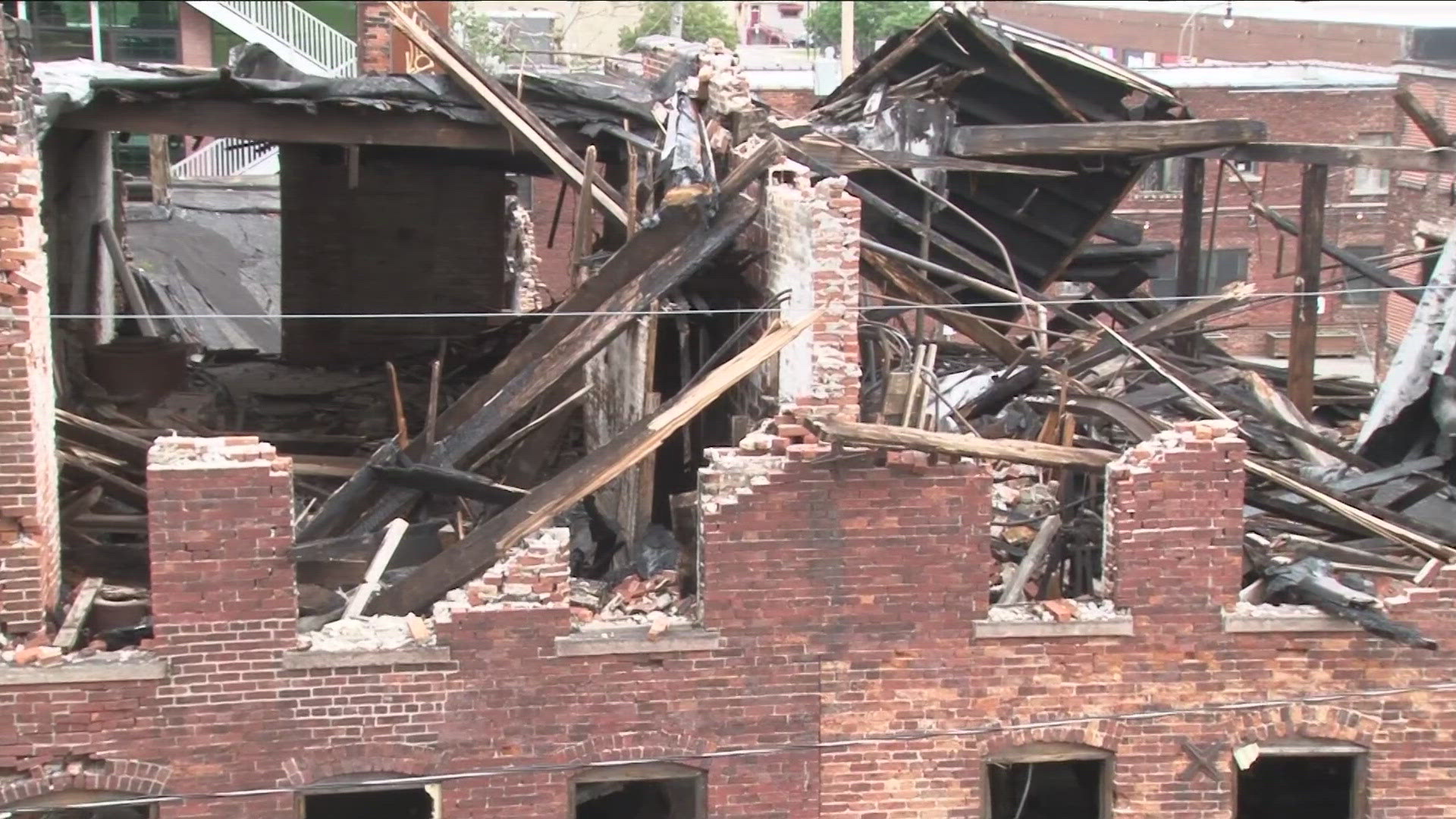BUFFALO, N.Y. — At the heart of a new legal battle between the owner of two Cobblestone District buildings and the city of Buffalo is the definition of "wood."
Buildings at 110 & 118 South Park Ave. were damage in a massive fire on June 18. According to the Buffalo Fire Department, the damage from the fire totaled $1 million.
Ever since the blaze, parts of Illinois Street and South Park Avenue have been blocked off because of a significant amount of debris and a determination by the city that the building isn't secure or safe.
On Monday, building owner Darryl Carr filed lawsuit to prevent the city from securing the property, as well as giving him permission to tear them down.
According to city code 113-15:
"Every wooden or frame building with a brick or other front which may hereafter be damaged by fire or otherwise to an amount not greater than 1/2 of its value may be repaired or rebuilt; but if such damage shall amount to more than 1/2 of such value thereof, exclusive of the foundation, then such building shall not be repaired or rebuilt but must be taken down."
Herein lies the difference of opinion between Carr and the city.
Carr and his attorneys argue that the two structures are wood-framed.
The city, according to its response to the lawsuit filed on Aug. 8, says that the structures are timber and that there are different guidelines for timber structures.
One of the documents filed by the city is an affidavit from Permits and Inspections Services commissioner Catherine Admur.
The affidavit states:
"The classification 'Wood Frame' does not have the general meaning of all frames made of wood. Its meaning is specific to building codes and standards and how they apply to the 'Wood Frame' construction type. This is true of both the historic and current codes. 110 and 118 South Park are classified as 'Heavy Timber' construction type not 'Wood Frame.' The Petitioner's attorney is conflating and confusing industry specific terminology to the general vernacular, and it is not founded in the actual historical or current industry uses of the term, or their purpose and meaning."
Legal analyst Barry Covert says the legal onion peel of these numerous cases between the city and Carr are becoming complex, but ultimately Judge Panepinto may have to define what wood is in this latest legal filing.
"I think the judge, as part of this proceeding, will have to decide whether heavy timber comes within the definition of wood to a lay person, and even a lawyer," Covert said. "I would think that wood is wood and timber is still wood, but the city's taking the position that heavy timber is not the same type of material."
The city argues that buildings codes within the city charter clearly state the difference between wood-framed and timber buildings and have asked the judge to dismiss the latest case.
Judge Catherine Panepinto adjourned the case until next Aug. 16 and encouraged Carr and the city to find a resolution on their own.

